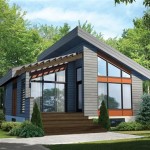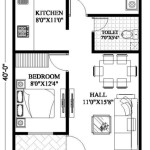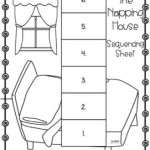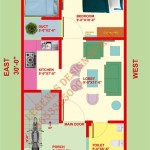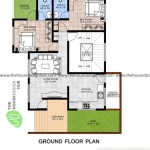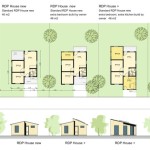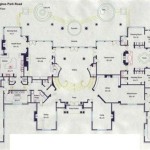House Plans With a Courtyard: An Exploration of Design and Functionality
House plans with a courtyard represent a significant shift from traditional, inward-facing architectural designs. These plans incorporate an open space, the courtyard, within the footprint of the house, creating a central hub that influences light, ventilation, and living patterns. The courtyard serves as a versatile area, functioning as an outdoor living space, a garden, or even a source of natural light for interior rooms. The increasing popularity of courtyard house plans stems from their ability to enhance privacy, offer a connection to nature, and create a unique aesthetic.
Courtyard house plans are not a recent invention. Historically, they have been prevalent in various cultures across the globe, each adapted to local climates and social customs. From the Roman atrium houses to the traditional riads of Morocco and the Chinese siheyuan, the courtyard has served as a way to control the environment, provide security, and foster a sense of community within the household. Modern courtyard house plans draw inspiration from these historical precedents while incorporating contemporary design principles and materials.
The design of a courtyard house plan involves careful consideration of several factors. The size and shape of the courtyard itself, the orientation of the house on the lot, the materials used in construction, and the integration of indoor and outdoor spaces are all critical elements. A well-designed courtyard house plan will maximize natural light, create comfortable microclimates, and provide a seamless transition between interior and exterior living areas.
Benefits of Courtyard House Plans
One of the primary benefits of courtyard house plans is the enhanced privacy they offer. By creating a central, enclosed space, the courtyard effectively shields the interior of the house from the outside world. This is particularly advantageous in densely populated urban environments or on properties with limited setbacks. The courtyard walls act as a barrier, reducing noise pollution and providing a sense of seclusion. Windows and doors can be strategically placed to face the courtyard, allowing for ample natural light and ventilation while maintaining privacy from neighbors or street traffic.
Another significant advantage is the improved connection to nature. In conventional house designs, access to the outdoors often involves stepping onto a porch, patio, or into a backyard. With a courtyard house plan, nature is integrated directly into the heart of the home. The courtyard can be designed as a flourishing garden, a tranquil water feature, or a simple green space, providing a constant visual and sensory connection to the natural world. This can have a positive impact on mental and physical well-being, reducing stress and promoting relaxation. The ability to step directly from interior living spaces into a private outdoor oasis contributes to a more balanced and harmonious lifestyle.
Furthermore, courtyard house plans can significantly improve the thermal performance of a building. The courtyard acts as a buffer zone, moderating temperature fluctuations and reducing the need for artificial heating and cooling. In hot climates, the courtyard can be shaded during the day, providing a cool and sheltered space. The surrounding walls help to block direct sunlight and reduce heat gain. At night, the courtyard can release accumulated heat, helping to cool the interior of the house. In colder climates, the courtyard can be designed to capture solar heat, which can then be radiated into the interior rooms. The use of appropriate landscaping, such as deciduous trees, can further enhance the thermal performance of the courtyard throughout the year.
Design Considerations for Courtyard Houses
The orientation of the courtyard is a crucial design consideration. The geographical location, local climate, and prevailing wind patterns will all influence the optimal orientation. In general, courtyards located in warmer climates should be oriented to minimize exposure to direct sunlight during the hottest parts of the day. This can be achieved by positioning the courtyard to the north or east. In cooler climates, courtyards can be oriented to maximize solar gain during the winter months. A south-facing orientation is often preferred in these regions. The orientation of the courtyard will also affect the placement of windows and doors, as well as the type of landscaping that is appropriate.
The size and shape of the courtyard will depend on the overall size of the house, the desired function of the courtyard, and the aesthetic preferences of the homeowner. A small, square courtyard can create a sense of intimacy and enclosure, while a larger, rectangular courtyard can provide more space for outdoor activities. The shape of the courtyard can also influence the flow of air and light. A narrow, elongated courtyard, for example, can create a wind tunnel effect, which can be beneficial in hot climates. It is important to consider how the size and shape of the courtyard will affect the overall proportions of the house and the relationship between indoor and outdoor spaces.
Material selection is another important aspect of courtyard house design. The materials used for the courtyard walls, flooring, and landscaping should be durable, weather-resistant, and aesthetically pleasing. Common materials include brick, stone, concrete, wood, and metal. The choice of materials will depend on the style of the house, the local climate, and the budget. It is also important to consider the environmental impact of the materials and to choose sustainable options whenever possible. The use of permeable paving materials can help to reduce stormwater runoff and improve the drainage of the courtyard. The selection of plants for the courtyard should also be carefully considered, taking into account the local climate, soil conditions, and the desired aesthetic effect.
Types of Courtyard House Plans
There are several different types of courtyard house plans, each with its own unique characteristics. An atrium house, for example, features a central courtyard that is open to the sky and surrounded by rooms on all sides. This type of plan is often used in warmer climates, as it allows for maximum natural light and ventilation. A patio house, on the other hand, typically features a smaller courtyard that is more enclosed. This type of plan is often used in colder climates, as it provides more protection from the elements. A cloister house features a covered walkway that surrounds the courtyard, providing a sheltered space for outdoor living. The specific type of courtyard house plan that is chosen will depend on the individual needs and preferences of the homeowner.
A variant involves a "U-shaped" courtyard house plan. In this design, the house surrounds the courtyard on three sides, with one side remaining open. This configuration can be advantageous for capturing specific views or for creating a more open connection to the surrounding landscape. The open side of the courtyard can also serve as an entry point or a transition zone between the interior and exterior spaces.
Another variation is the "L-shaped" courtyard house plan. In this design, the house surrounds the courtyard on two sides, creating a more intimate and secluded outdoor space. This configuration is often used in smaller properties or in urban environments where privacy is a primary concern. The L-shaped courtyard can also be used to create a sheltered outdoor living area, protecting it from wind and sun.
Incorporating Specific Features in Courtyard Design
Water features, such as fountains or ponds, can add a sense of tranquility and serenity to a courtyard. The sound of running water can be very relaxing and can help to mask unwanted noise from the surrounding environment. Water features can also attract birds and other wildlife, adding to the natural beauty of the courtyard. The design of the water feature should be carefully considered, taking into account the size and shape of the courtyard, the style of the house, and the budget. It is also important to ensure that the water feature is properly maintained to prevent the growth of algae and other undesirable organisms.
Outdoor fireplaces or fire pits can provide a focal point for the courtyard and can extend the use of the outdoor space into the cooler months. A fireplace can create a warm and inviting atmosphere, making the courtyard a comfortable place to gather with friends and family. The design of the fireplace or fire pit should be carefully considered, taking into account the size and shape of the courtyard, the style of the house, and local building codes. It is also important to ensure that the fireplace or fire pit is properly ventilated to prevent the build-up of smoke and carbon monoxide.
Strategic landscaping can enhance the beauty and functionality of a courtyard. Plants can be used to create shade, provide privacy, and add color and texture to the outdoor space. The selection of plants should be based on the local climate, soil conditions, and the desired aesthetic effect. Native plants are often a good choice, as they are well-adapted to the local environment and require less maintenance. It is also important to consider the mature size of the plants and to ensure that they are properly spaced to allow for future growth. In smaller courtyards, vertical gardening techniques, such as trellises or living walls, can be used to maximize the use of space.

Radical Terrace Pool House Plans Courtyard U Shaped

Grama Sue S Floor Plan Play Land Olivia Courtyard Container House Plans Small

House Plans With Courtyards And Open Atriums

Courtyard House Abin Design Studio Archdaily

Floor Plans With Courtyard Google Search House Model Plan

Courtyard House Plans 61custom Contemporary Modern

Design For A Square Courtyard House Ground Floor Plan Riba Pix

Home Plan Casoria Tuscan House Plans Design Sater Collection

Home Plans With A Central Courtyard Full In Law Apartment

House Plans With Courtyards And Open Atriums

